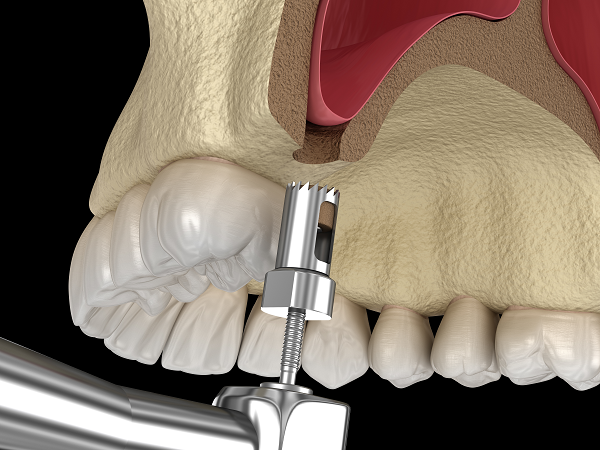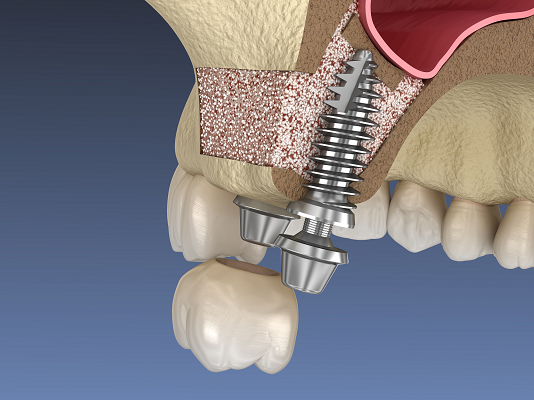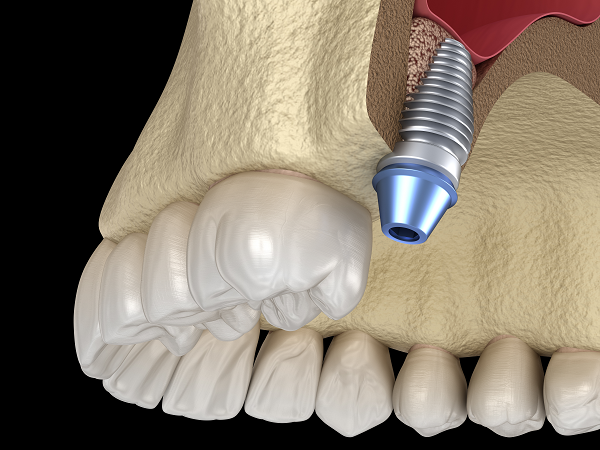Sinus Lift
Elevate Your Smile with a Sinus Lift:
The Key to Successful Upper Jaw Implants
If you’re considering dental implants in the upper jaw but lack sufficient bone height due to an enlarged sinus cavity, a Sinus Lift may be the solution you need. This advanced surgical procedure creates the necessary foundation for implants, ensuring a stable, long-lasting, and beautiful restoration of your smile.
Video: Open Surgery- Sinus Lift
What Is a Sinus Lift?
A Sinus Lift, also known as sinus augmentation, is a surgical procedure that increases the amount of bone in the upper jaw, specifically in the area of your back teeth (molars and premolars). This is achieved by lifting the sinus membrane and placing bone graft material into the space where the sinus was, creating additional bone height in the area.
This procedure is often necessary when the natural bone height in the upper jaw is insufficient to support dental implants, which can occur due to bone loss from tooth extractions, gum disease, or the natural anatomy of the maxillary sinus. By performing a Sinus Lift, your oral surgeon creates a strong, stable foundation for dental implants, making it possible to replace missing teeth in the upper jaw with confidence.
Open Surgery of Sinus Lift Bone Graft
Open sinus lift surgery, also known as a lateral window sinus lift, is a more invasive procedure used when there is significant bone loss in the upper jaw, making it necessary to create ample space for a dental implant. The surgery begins with an incision in the gum tissue to expose the jawbone. A small window is then created on the side of the sinus wall, allowing the surgeon to gently lift the sinus membrane away from the bone. The space created by lifting the membrane is filled with bone graft material, which may be from the patient’s own body, a donor, or a synthetic substitute. This graft material helps to rebuild the bone height needed for implant placement. The incision is then closed with sutures, and the area is left to heal, allowing the bone graft to integrate with the natural bone over several months. This procedure is crucial for patients with severe bone loss and ensures that the dental implant will have a strong, stable foundation.

Image: Open Surgery- Sinus Lift
Video: Closed Surgery- Sinus Lift
Closed Surgery of Sinus Lift Bone Graft
Closed sinus lift surgery, or osteotome-mediated sinus lift, is a less invasive procedure used when only a slight increase in bone height is needed for implant placement in the upper jaw. In this approach, the sinus is accessed through the site where the dental implant will be placed, without the need to create a lateral window in the sinus wall. A small opening is made in the bone where the implant will go, and special instruments are used to gently push the sinus membrane upward, creating space for the bone graft material. Once the sinus membrane is lifted, the bone graft is carefully packed into the space beneath it. The dental implant may be placed immediately after the graft, or the area may be allowed to heal before implant placement. This technique is preferred for its reduced recovery time and lower risk of complications, making it a suitable option for patients with mild to moderate bone loss.
Why Choose a Sinus Lift?
A Sinus Lift is a critical step for many patients who require dental implants in the upper jaw, offering several important benefits:
Increased Bone Height: The primary goal of a Sinus Lift is to increase the vertical bone height in the upper jaw, providing sufficient space and support for the placement of dental implants.
Enhanced Implant Stability: By adding bone to the sinus area, a Sinus Lift ensures that your dental implants have a secure and stable foundation, reducing the risk of implant failure and ensuring long-term success.

Image: Closed Surgery- Sinus Lift
Improved Aesthetics and Function: With the added bone support, dental implants can be placed in optimal positions, leading to a more natural appearance and improved function for chewing and speaking.
Prevention of Sinus Complications: A Sinus Lift helps avoid complications that can arise when dental implants extend into the sinus cavity, ensuring that your implants remain securely anchored in the bone without impacting your sinus health.

Image: Implants after Open Surgery- Sinus Lift
The Sinus Lift Procedure: What to Expect
The Sinus Lift procedure is a well-established technique performed by experienced oral surgeons. Here’s what you can expect:
1. Initial Consultation: Your journey begins with a thorough consultation, during which your oral surgeon will assess your oral health, take digital scans or X-rays, and determine the need for a Sinus Lift. This is also the time to discuss your goals, ask questions, and create a personalized treatment plan.
2. Preparation and Anesthesia: On the day of the procedure, local anesthesia will be administered to ensure your comfort. Sedation options may also be available if you prefer a more relaxed experience during surgery.
3. Accessing the Sinus: Your surgeon will make a small incision in the gum tissue to expose the bone in the area where the implants are to be placed. A small window is then created in the bone, allowing access to the sinus membrane.
4. Lifting the Sinus Membrane: The sinus membrane is gently lifted away from the jawbone, creating a space into which bone graft material can be placed.
5. Bone Grafting: Bone graft material, which may come from your own body, a donor, or synthetic sources, is carefully packed into the space beneath the lifted sinus membrane. This graft material will integrate with your natural bone over time, increasing bone height and density.
6. Healing Period: After the graft material is placed, the incision is closed, and the healing process begins. Over the next several months, the graft material will fuse with your natural bone, creating a solid foundation for dental implants.
7. Implant Placement: Once the graft has fully integrated and the bone has healed, typically after several months, you can proceed with the placement of dental implants. Your surgeon will monitor your healing progress and advise you on the optimal timing for this step.

Image: Implant after Closed Surgery- Sinus Lift

Elevate Your Implant Success with a Sinus Lift
A Sinus Lift is a crucial step in ensuring the success of dental implants in the upper jaw. By increasing bone height and providing a stable foundation for implants, this procedure allows you to achieve the confident, beautiful smile you deserve.
Contact us today at 302-273-8300 to schedule your consultation and learn more about how a Sinus Lift can pave the way for successful dental implants.
Frequently Ask Questions
How Do I Know If I Need a Sinus Lift?
Your oral surgeon will determine if you need a Sinus Lift based on a thorough evaluation of your oral health, including X-rays or 3D imaging. This assessment will reveal the bone height in your
Is the Sinus Lift Procedure Painful?
The procedure is performed under local anesthesia, so you should not feel pain during the surgery. Some swelling, bruising, and discomfort are normal after the procedure, but these symptoms can be managed with over-the-counter pain relievers and should subside within a few days.
How Long Does It Take to Heal After a Sinus Lift?
The initial healing period usually takes a few weeks, but the bone graft material will take several months to fully integrate with your natural bone. In most cases, dental implants can be placed after 4 to 9 months, depending on the extent of the grafting and your body’s healing response.
What Materials Are Used for the Bone Graft in a Sinus Lift?
The bone graft material used in a Sinus Lift can come from various sources, including your own bone (autograft), donor bone (allograft), animal sources (xenograft), or synthetic materials. Your oral surgeon will recommend the best material based on your specific needs and medical history.
Are There Risks Associated with a Sinus Lift?
As with any surgical procedure, there are risks, including infection, sinus membrane perforation, or complications related to healing. However, these risks are relatively rare, especially when the procedure is performed by an experienced oral surgeon. Following post-operative care instructions carefully can help minimize these risks.
Can I Get Dental Implants Immediately After a Sinus Lift?
In some cases, it may be possible to place dental implants at the same time as the Sinus Lift if there is sufficient existing bone to stabilize the implants. However, in most cases, a healing period of several months is required before implants can be placed.
How Do I Care for Myself After a Sinus Lift?
After a Sinus Lift, it’s important to follow your surgeon’s care instructions closely. This may include avoiding certain activities that could increase pressure in the sinus area, such as blowing your nose or sneezing forcefully. Regular follow-up visits will help ensure that the graft is healing properly.
Is a Sinus Lift Covered by Insurance?
Coverage for a Sinus Lift varies depending on your dental insurance plan and the specific circumstances of the procedure. Some plans may cover part of the cost if the procedure is deemed medically necessary for implant placement. It’s important to check with your insurance provider to understand your coverage and out-of-pocket costs.
What Is the Success Rate of Sinus Lifts?
Sinus Lifts have a high success rate, particularly when performed by an experienced oral surgeon. Success depends on factors such as the patient’s overall health, adherence to post-operative care instructions, and the quality of the bone graft material used.
